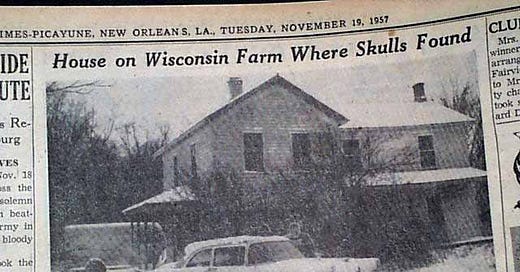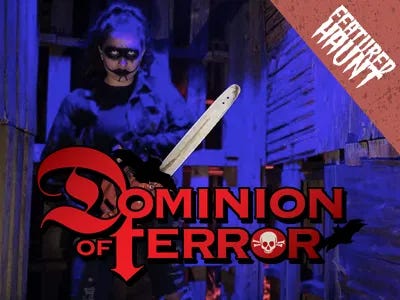Ed Gein (b. August 27, 1906) is just one of many true Wisconsin horrors that left an indelible scar on the world. The revelation of the atrocities he was committing in his isolated farmhouse in the rural heart of America has horrified and captivated us for decades, inspiring countless writers, filmmakers, and artists over the years.
But what if he never existed? Or never got caught?
That’s what writer James Murray was wondering when he started penning his No Gein stories, exploring the impact on pop culture if the general public never knew the name Ed Gein.
“Without Gein, Robert Bloch doesn’t write Psycho,” he explained in an interview with Daily Dead. “No Psycho novel means no Psycho movie with Janet Leigh in the shower. Then her daughter, Jamie Lee Curtis, doesn’t get cast in Halloween. Halloween is not as successful, and the whole scene of 1980’s American horror has a different look to it.”
“On the dramatic side, in real life,” Murray says, “the people of Plainfield hate the association their community has with Ed Gein, which is understandable. In my stories, Plainfield gets to remain this quiet unknown place, for a while. Then, it’s kind of like the town pays a price for keeping a secret, and the place becomes even more of a circus than it does in our world.”
Read James Murray’s Ed Gein: An Alternate Horror on his website now »
Check out our shop right here »
Gein Tour
Places
HO-Scale Horrors
Wisconsin modelmaker W. Irving Railfan produces HO-scale models of Ed Gein’s house, Worden’s Hardware, and Mary Hogan’s tavern, as well as other notorious buildings from horror and true crime, such as the Amityville Horror house, Bates Motel, Spahn Ranch (home to the Manson Family), the Vilisca Axe Murder House, the “Murder Castle” of H.H. Holmes, and Sharon Tate’s house.
Color Me Once
With the release of The Crow remake upon us, it’s the perfect time to look back at Wisconsin’s contribution to the iconic soundtrack of the original 1994 film. Milwaukee band Violent Femmes wrote a song called “Color Me Once” for the production, which was recorded in drummer Victor DeLorenzo’s Milwaukee studio.
The song was good, but divisive.
Violent Femmes fans weren’t into the the somber, melancholic tone that differed drastically from the band’s other, more upbeat material à la “Blister in the Sun,” and The Crow fans discovering the band for the first time were disappointed to learn that the rest of the Violent Femmes discography wasn’t even remotely goth.













If Ed was never caught, I imagine we wouldn't have many of the great horror films we have today.